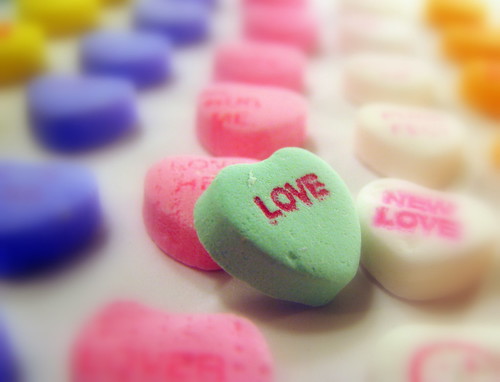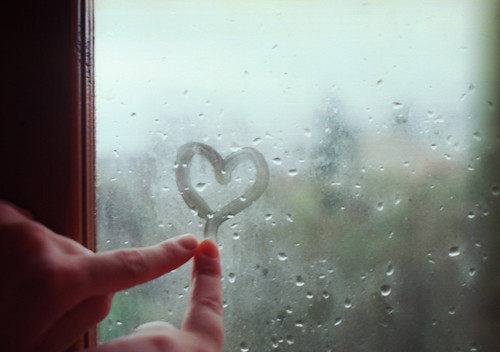Off the Mat: The Heart of the Matter
The Heart of the Matter
 The ubiquitous Valentines displays have me wondering, how did the heart become the symbol of love? Why not the gut, as in a gut reaction, or the eyes, those windows to the soul? While Wikipedia has not provided helpful answers to this random thought train, it occurs to me that yoga might.
The ubiquitous Valentines displays have me wondering, how did the heart become the symbol of love? Why not the gut, as in a gut reaction, or the eyes, those windows to the soul? While Wikipedia has not provided helpful answers to this random thought train, it occurs to me that yoga might.
Yoga’s map of the body’s energy routes, the chakra system, offers one path to connect the heart to love. The chakras, seven energy centers tracking with our spinal column, each hold a particular focus. Just as our physical heart circulates blood and oxygen throughout our system, the heart chakra, number four of seven, sits right in the middle, integrating physical, mental, and spiritual energy.
Named anahata in Sanskrit, the heart chakra seeks to balance the flow of energy up and down the line as well as energy entering and exiting the system through relationships. The heart chakra is a place of connection, a bridge. In Eastern Body, Western Mind, her comprehensive study mapping the chakras to western psychology, clinical psychologist and master yoga teacher Anodea Judith translates anahata as unwounded. According to Judith, failing to love ourselves sufficiently is the most common barrier in the heart chakra. This idea strikes an uncomfortable chord of truth upon my heartstrings.
∞
The key to wholehearted living, according to Professor Brené Brown’s research, is vulnerability. If you have a clear sense of your values and priorities – a strong backbone – you have the sense of safety to share your heart with others. Brown caught my attention with this metaphoric link between a strong back and an open heart. She writes about leadership and social interaction, yet this is true anatomically, as well. Well-developed muscles between our shoulder blades physically support our chests, creating the upright, confident posture we desire.
A rounded posture is protective of our vital organs, our soft centers. Encased in muscle and bone, we are safer in a moment of danger. Yet this protective posture is also passive – you can’t fight or flee from the fetal position. And staying rounded hurts. It strains our muscles. Guarding against vulnerability creates its own pain.
∞
 My kid is growing gangly. When something excites him, his whole body reacts: his head lifts, eyes and grin widen, and he seemingly grows two inches taller as heart opens with bouncing expectation. But mostly, he slumps over Os and milk, over book, guitar, or whatever screen he’s on at the moment.
My kid is growing gangly. When something excites him, his whole body reacts: his head lifts, eyes and grin widen, and he seemingly grows two inches taller as heart opens with bouncing expectation. But mostly, he slumps over Os and milk, over book, guitar, or whatever screen he’s on at the moment.
It drives me nuts. I’ve tried to change the words, at least, asking for what I want, instead of what I don’t; “lift your chin and sit up tall” instead of “don’t slouch.” Even so, I’ve become the mom picking on posture.
It’s no wonder; posture-based bodywork is what I do all day. I teach adults what to stretch (hint: front) and what to strengthen (hint: back) to counteract the countless hours spent computing and commuting so that our hips and low back, neck, and shoulders aren’t in constant pain.
I see the scoliosis curve developing in my son’s spine, just as it did in mine during 4th grade. I want to prevent his pain. Preempt the pattern before it sets in. Perhaps, I worry, the pull of screens and gravity are too strong. Perhaps there’s too much in the way of standing tall with an open heart.
One night at bedtime, I lose my cool about the hyper-extended angle of his neck on a big, cozy pile of pillows. He shrinks away in self-protection, curling deeper into his blankets and stuffies, away from my outburst.
I stop. Breathe. Apologize. And explain. “The reason this matters so much to me is I spend all day working with grown-ups whose bodies hurt all the time. I don’t want that to happen to you. I don’t want your body to grow up bent and sore.”
“Like Grammy?” comes a calm, quiet question from the cover depths.
“Yes, like Grammy.” I choke through the sudden tears blocking voice and vision.
A small hand emerges from the blankets, seeking mine. Here is anahata in action, recognizing my vulnerability, seeking to connect. Heart open, I clasp the hand reaching out, offering loving understanding.
ABOUT THE AUTHOR
Pain specialist, yoga instructor, and Reiki practitioner Ginny Hamilton teaches simple & proven techniques to release pain & restore energy in the workplace, group classes & private sessions. She has put down roots in South Amherst with her spouse and young son. Daily she’s amazed by the beauty the Pioneer Valley offers, though her allergies beg to differ. In Off the Mat, Ginny explores how yoga’s physical and mindfulness exercises help her parent and how parenting shapes her yoga practice. http://www.ginnyhamilton.com
[Photo credits: (cc) Brent Moore; (cc) Chiara Baldassarri]
 Hilltown Families
Hilltown Families 






























